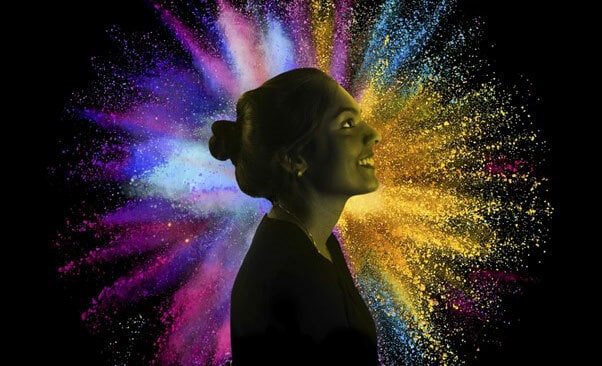Blockchain technology is a new approach to recording, sharing and verifying information among members of a community. Instead of relying on a central party, community members can directly run networks and host data that represents anything from payments to carbon credits.
The technology is near impossible to cheat, ushering in exciting opportunities to build trust.
“The applications of blockchain reach far beyond bitcoin and cryptocurrency. Blockchain is helping us more effectively respond to some of today’s biggest environmental and societal challenges,” say Deloitte Ventures’ Blockchain Director, Tyler Welmans and Raam Chandrasekharan, member of the World Economic Forum’s Crypto Sustainability Coalition.
Tyler and Raam have high hopes for the technology. Here’s why.
Blockchain as a trust builder.
“Information on a blockchain is transparent, verifiable and permanent. It’s near impossible to cheat, so businesses can more credibly prove what they are doing and use it to build trust.”
Blockchain started life recording digital payments, logging each event (and all overall balances) on a digital ledger that is replicated across a distributed network of computers.
It’s a technology that enables members of a group to agree on a single record of events, with all the information being cryptographically secured so “any attempt to tamper with the record is immediately detected and rejected by the wider network,” adds Tyler.
While Bitcoin remains one of the best examples, many offshoots of the underlying technology have evolved. “We’re seeing exciting voluntary carbon market solutions break through, where blockchain systems can supplement the way we measure, record and verify the impact of carbon removals and reductions projects. It can help facilitate efficient and transparent carbon credit marketplaces, and lower the barriers to accessing such assets,” says Raam.
“This extends to supply chain traceability solutions. With organisations using the tech to prove responsible sourcing, emissions targets and offsets, and waste reduction practices. It dampens the risk of greenwashing and supports circular economy ambitions,” he says.
Its permissionless nature is empowering.
“The technology is being applied for good across industries,” says Raam. “Because many blockchains are permissionless (no permission is needed to access and use them) they’re inclusive, both for consumers wanting to access new services and for innovators wanting to create and launch new services to people worldwide.”
Tyler explains, “The decentralised finance (or DeFi) ecosystem provides basic bank-like services to people who may not have access to traditional financial services. For others, crypto assets can represent an alternative to local currency altogether. In countries such as Argentina and Turkey, inflation exceeded 80% in 2022, so people are exploring Bitcoin and stablecoins as alternative ways to store their wealth (with mixed results as crypto assets can be volatile, too!).”
“And to track donations and deliver help quickly, crowdfunding initiatives and charities increasingly use the technology instead of going through centralised banks and collection/distribution services with hidden fees and opaque processes. In the first week of the war in Ukraine, over $55m worth of crypto was sent to the Ukrainian government and not-for-profit organisations.
It can help democratise activity in organisations.
The transparency and traceability of blockchains could give us additional tools to counter corruption in communities, corporations, even nations. “How cool would it be if we could submit and count electoral votes in a convenient, secure, verified and automated way?” says Raam.
“The technology gives us a new way to represent and coordinate groups working collaboratively towards common goals, using decentralised autonomous organisations (DAOs),” says Raam. “DAOs are a new form of open and transparent organisational structure underpinned by blockchain.”
A DAO participant can suggest and vote on proposals, such as how to spend community-raised funds. Then as proposals are passed, self-enforcing digital agreements can execute the voted actions autonomously. Organisations that use such technology-based decision-making frameworks can speed up decision-making time and better align strategic decisions with the interests of members, citizens or employees.
But we need to acknowledge what can go wrong.
While the accessibility, inclusivity and permissionless nature of open networks may help address longstanding challenges, there is scope for abuse.
“We must acknowledge the negative ways people may use these powerful new technologies – illicit finance, scams, fraud. To defend against these risks, we need robust business and consumer protection safeguards, as well as solid anti-money-laundering controls,” says Tyler. “Regulators are forming strategy and policy for new services, but there are discrepancies across jurisdictions and territories. There’s a way to go, but the picture is improving.”
Raam agrees: “Many of these concepts are still in an exploratory phase. We haven’t yet fully realised their impacts. Blockchain alone can’t solve societal or environmental challenges – it’s ultimately up to individuals, communities, organisations and policy makers to effectively build, test and adopt innovative solutions to coordinate an effective response.”
How to get started.
“Exploring blockchain to address a humanitarian challenge or re-imagine a business model is worth doing,” says Tyler. In implementing any solution, however, “you should start by considering the problem you want to solve, that way you avoid falling into the trap of blockchain being a solution looking for a problem,” says Raam.
“Next, consider what you’re trying to achieve and validate the case for the technology before developing it. Ideally, your solution should be feasible, viable and desirable,” adds Tyler.
“For it to be a force for good,” Raam says, “we need to consider the people using it as much as the technology itself. Many of the technology’s current tools and services are not yet intuitive by design, which can put new users off.”
But to help you navigate blockchain as it develops and evolves through more user-friendly interfaces, fantastic podcasts and newsletters from Green Pill, ReFi DAO and Bankless can guide your journey.
“This is a moment to remember. Blockchain and Web 3.0 are in their early stages and have plenty of room for growth and innovation,” says Tyler, “and it’s up to us, as the builders and users of these new technologies, to shape the course of progress and to make sure it has a positive impact.”



